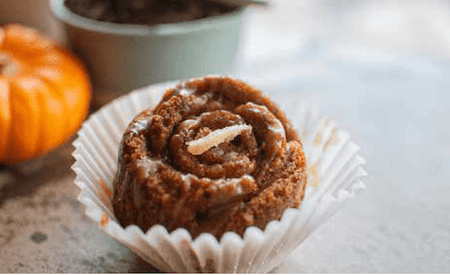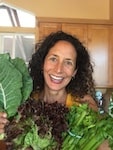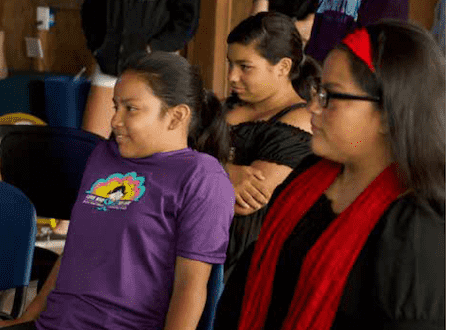
Why I Chose to Pack My Kid's Lunches
Healthy Eating: September 2019
By Kris Holden
Kids are just getting back to school, classroom supply lists are waiting to be fulfilled, disorderly morning chaos is on the rise (at least in our household) and school lunches are needing to be packed.

The start of school is always a bit challenging getting everyone back on a routine. Breakfasts now need to be a source of fuel for focus and energy, lunches require research and creativity in order for them to be enticing but nutritious.
When my oldest child started public elementary school I wanted to get to know the school and where my daughter would be spending half of her waking hours. In the cafeteria I discovered that most of the school lunches were heavily processed, containing loads of sugar, artificial colors, flavors and more. Witnessing the various classroom parties throughout the school year I saw that much of the treats brought in were brightly colored cupcakes, frosted sugar cookies and sweet fruit punch. I quickly committed to packing my children’s lunches everyday and making sure their lunch would balance out the extra sugar and processed foods that were given to them while at school.
In the US, food companies add more than 15 million pounds of artificial dyes to foods each year. Some food you may not even realize that it’s in, such as: crackers, pickles, yogurt, potato chips, pastas, canned fruit, meat and more. The dye is added to simply enhance the color, making it more appealing, especially to children. Artificial coloring is created synthetically, some made by burning coal tar and others are made from petroleum byproducts. The US approves seven artificial food dyes to be used in foods, the most commonly used are: Red 40, Yellow 5 and Yellow 6, which make up 90% of the market. The European Union has banned many of these dyes but for foods that do carry artificial dyes they are required to come with a warning label. Artificial food dyes have been linked to behavioral issues as well as other health concerns. Some children are more sensitive to these dyes than others. For years teachers have been observing the different behaviors of children of those who consume more highly processed foods in their daily diet, which include artificial colors, and those who consume a minimal amount.
Throughout the years of packing school lunches I felt more at ease knowing that my children were fueling their growing bodies and developing brains with nutritional whole foods even when they chose to indulge in the sweets that were served in their classrooms. I continually had to be creative, in what I packed, to maintain their interest in their lunch each day. For fresh ideas I’d often ask the kids what their friends had in their lunches and I’d talk with other parents to see what they’re packing their children. Some lunch ideas my children enjoyed were: teriyaki rice and broccoli, pot stickers, peanut butter, honey and banana in a tortilla, hummus and sliced cucumber in a pita pocket, baked potato and corn/beans/rice & salsa. For snacks I would pack fruit, homemade muffins loaded with hidden zucchini, carrots or sweet potato or bars. Our favorite bars, with the cleanest ingredients are GoMacro, peanut butter or chocolate chip peanut butter flavors and Larabars, especially the chocolate chip cookie dough or peanut butter chocolate chip flavors.
My concerns are with the current state and future of our food industry and how that directly affects the health of our children. Knowledge is power and the more we choose to be aware of what we’re eating and how that impacts our health and our environment the better for us all.
Our family's favorite muffin recipe: Carrot Cake Muffins
INGREDIENTS:
1 1/2 cups unsweetened nondairy milk.
7-8 Medjool dates chopped.
1/2 very ripe banana, sliced.
1/4 cup raisins.
1 tsp. vanilla extract.
1 3/4 cups old-fashioned rolled oats.
2 tsp. cinnamon.
2 tsp. baking powder.
1 tsp. baking soda.
1 1/2 cups grated carrots (2-3 medium).
1/2 cup raisins.
1/2 cup chocolate chips (optional).
1/2 cup walnuts, chopped (optional).
DIRECTIONS:

- Place the nondairy milk, dates, banana, 1/4 cup raisins and vanilla into a small bowl and set aside for at least 15 minutes (so the dates can soften.)
- Preheat the oven to 350°F. Line a muffin pan with non-stick parchment paper liners.
- Grind the oats into flour with a blender. Transfer to a medium bowl and whisk in the cinnamon, baking powder and baking soda.
- Place the milk, dates, banana, raisins and vanilla in the blender and blend until smooth.
- Stir the date mixture into the bowl of dry ingredients. Fold in the grated carrots 1/2 cup raisins, chocolate chips and walnuts (if using).
- Spoon the batter into the muffin pan and bake for 25-30 minutes. To bake a standard loaf, decrease the milk by 1/2 cup, line a 9x5x3 loaf pan with parchment paper and bake at 325° for 50-55 minutes or until top is medium brown. Let cool completely before serving.
I’ve also made these muffins with grated zucchini and/or diced apples. Make sure to squeeze the excess moisture out of the zucchini before adding. Baking time may need to be slightly increased.
*Recipe (although slightly modified) by StraightUpFood.com


You May Also Like

DJ Shae Slays in Santa Cruz
September 1, 2019
When They Melt Your Heart: Teacher’s Desk September 2019
September 1, 2019

